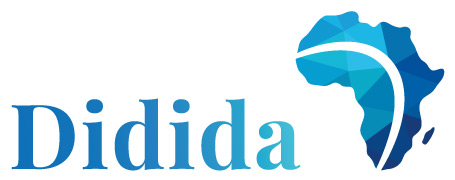Transforming Public Health Paradigms: Didida’s Role in Overcoming the Limitations of Vertical Disease Programs
Introduction
In the landscape of global health, vertical disease programs have long been a cornerstone in the battle against infectious diseases. These programs, focusing intensively on specific diseases such as malaria, tuberculosis, and HIV/AIDS, have delivered remarkable successes by reducing morbidity and mortality rates. However, they often operate in isolation from the broader health system, which can lead to significant inefficiencies and missed opportunities for addressing health comprehensively. The Didida project represents a groundbreaking shift in approach, integrating advanced diagnostic and digital tools to enhance public health strategies across Africa. This article explores the challenges posed by a vertical approach to disease management and outlines how Didida’s innovative strategies will foster a more integrated and sustainable health system.
The Challenge of Vertical Disease Programs
Vertical disease programs are characterized by their targeted focus on specific health issues. This approach has several advantages, such as concentrated resources, specialized training for healthcare workers, and robust funding from global donors. However, the vertical approach also presents substantial challenges:
- Resource Allocation and Imbalance: Vertical programs often consume a disproportionate share of public health budgets and resources, potentially undermining the capacity of the general healthcare system. This can lead to an imbalance where non-targeted diseases receive less attention and funding, despite their impact on public health.
- Infrastructure and Sustainability Concerns: By developing infrastructure that serves only specific programs, vertical approaches can lead to duplicative health systems that are not sustainable in the long term. Once funding ends, maintaining this infrastructure becomes a significant challenge for local governments.
- Integration with National Health Systems: Vertical programs sometimes operate parallel to national health systems, which can hinder comprehensive health service delivery. This separation can prevent the development of integrated strategies that cater to the broader health needs of communities.
- Health Inequities: Targeted disease programs can inadvertently widen health disparities by focusing on diseases that are prioritized by external funders rather than those identified as priorities by the local population.
Didida’s Integrated Approach to Disease Management
The Didida project, with its focus on the development of a new multiplexed diagnostic tool and digital health infrastructure, aims to address these challenges by promoting an integrated approach to disease management. Key aspects of Didida’s strategy include:
- Multiplexed Diagnostic Tools: Didida is developing a diagnostic tool that can detect multiple diseases simultaneously. This innovation is crucial for low-resource settings where diseases often coexist, and healthcare facilities are scarce. By enabling the diagnosis of several conditions at once, Didida reduces the need for multiple tests and visits, thereby saving costs and accelerating treatment.
- Digital Health Integration: Leveraging digital tools to connect diagnostic results with health databases such as DHIS2 allows for real-time data analysis and better disease surveillance. Didida’s digital approach supports the integration of health services by providing a platform for comprehensive health data management that can be accessed by healthcare workers and policymakers alike.
- Training and Capacity Building: Beyond its technological innovations, Didida emphasizes the training of healthcare professionals and community workers across Africa. This focus on education and capacity building ensures that health systems are strengthened at a fundamental level, promoting sustainability and resilience.
- Community Engagement and Empowerment: Recognizing the importance of community involvement, Didida engages local populations in the development and implementation of health strategies. This bottom-up approach ensures that interventions are culturally appropriate and more likely to be accepted and sustained by the communities they aim to help.
Impact and Future Directions
The implementation of Didida’s integrated health strategies has the potential to transform public health landscapes in Africa. By moving away from the vertical disease approach, Didida is paving the way for more holistic health services that address a wide range of health challenges. The anticipated impacts include:
- Improved Health Outcomes: Integrated health services are more effective at managing co-morbidities and addressing the broader health needs of populations, leading to improved overall health outcomes.
- Increased Efficiency: By reducing redundancies and leveraging synergies between different health programs, Didida can enhance the efficiency of health service delivery.
- Enhanced Sustainability: Building capacity within local health systems promotes long-term sustainability, reducing dependency on external funding and support.
Conclusion
While vertical disease programs have played a critical role in addressing specific health crises, the future of public health lies in integrated approaches that consider the complexity of human health in a holistic manner. The Didida project represents a significant step forward in this direction, offering innovative solutions that promise to revolutionize disease management and health service delivery across Africa. By addressing the limitations of vertical programs and promoting a more interconnected and sustainable approach, Didida is not just changing how diseases are managed; it is reshaping the future of public health.
Want to know more?
Are you a student and you want to learn more? A researcher seeking to consult our publications? A citizen eager to better understand the issues? A decision-maker who can promote this innovation? A journalist looking for an engaging story to tell?
